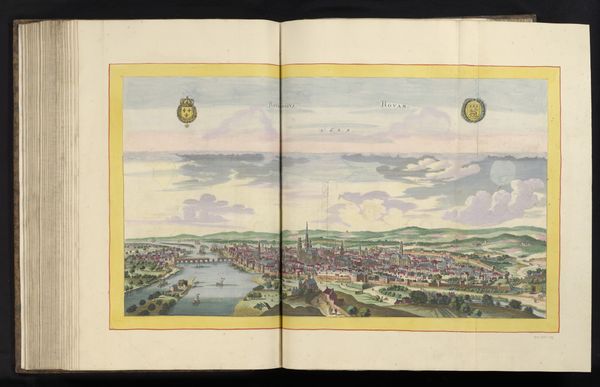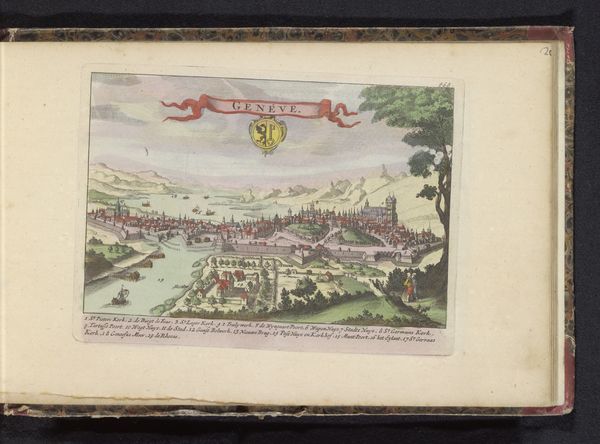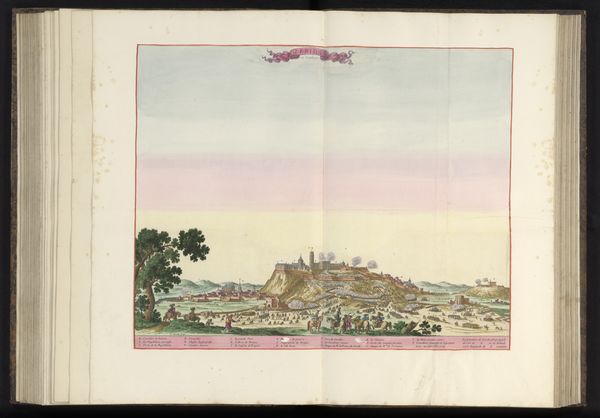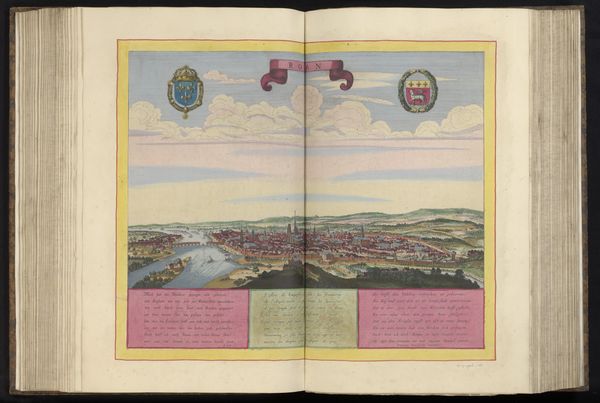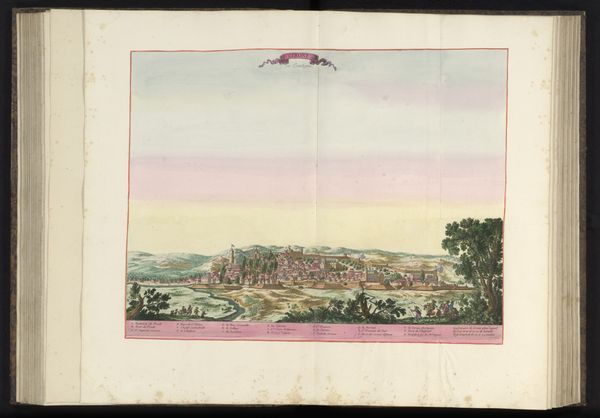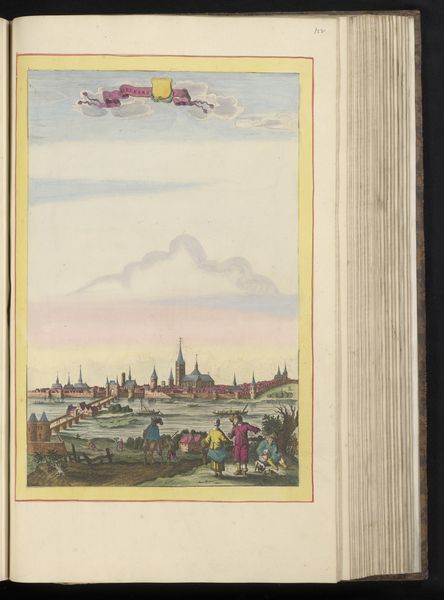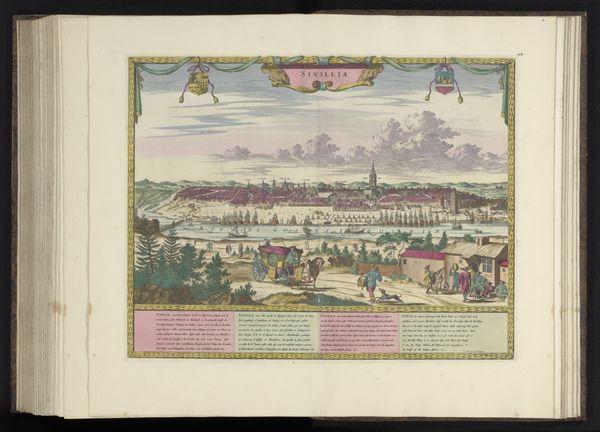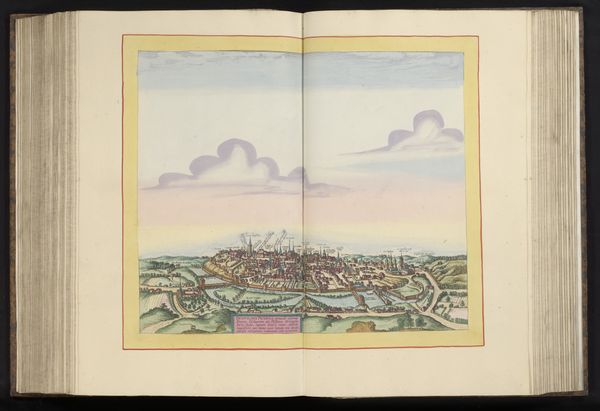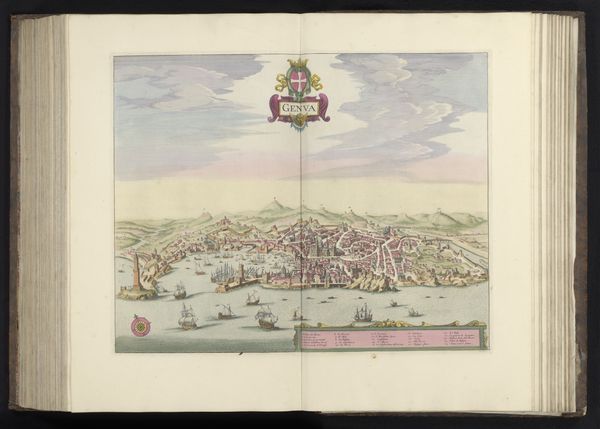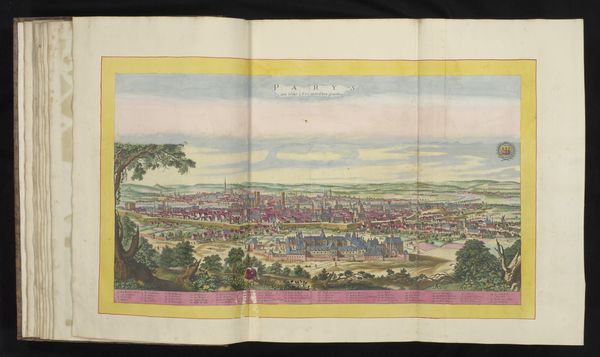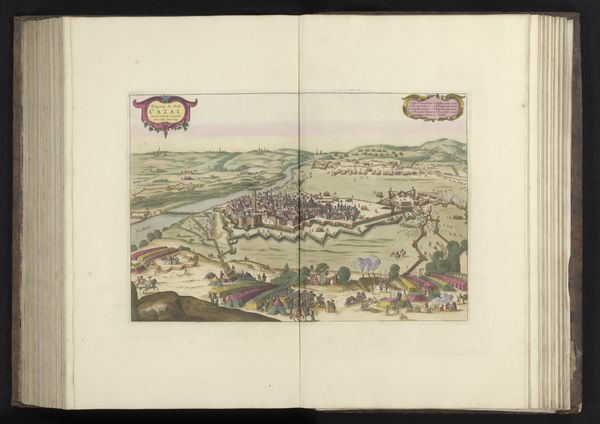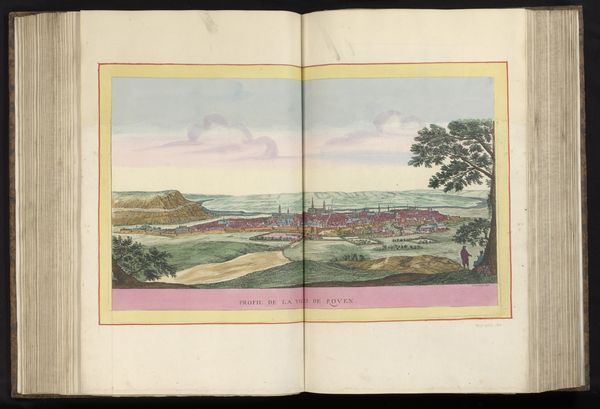
print, etching, engraving
#
baroque
# print
#
etching
#
landscape
#
cityscape
#
engraving
#
watercolor
Dimensions: height 407 mm, width 518 mm
Copyright: Rijks Museum: Open Domain
Editor: This etching, "Gezicht op de stad Rome," from around the late 17th or early 18th century, presents a panoramic view of Rome. It has a wonderfully balanced, almost symmetrical composition, but something about the formalized, elevated perspective feels rather… distant. What kind of symbolic meaning do you find in this cityscape? Curator: The panoramic perspective, indeed, establishes a specific symbolic relationship with the city. Rome, in this image, becomes an idea as much as a place. Notice the placement of the coat-of-arms above the cityscape. How might that frame our understanding? Editor: It seems to assert authority or ownership over the city. It emphasizes Rome as an important seat of power, almost like branding. Curator: Exactly. Consider how frequently Rome has reinvented itself, drawing upon prior periods for renewal or justification. Visual markers – the arrangement of key buildings and monuments, and even the light in the sky - all create a desired emotional impression about the city. This bird's-eye view offers a particular narrative. What feeling does the "branding", as you say, evoke for you? Editor: It creates a sense of reverence, maybe a controlled admiration. I mean, it’s pretty effective in positioning Rome as a timeless, authoritative place, right? Curator: It certainly attempts to fix it in a specific time and conceptual space. How much do you think such a constructed image succeeds? Do we see "Rome," or something else entirely? Editor: Hmm, I see your point. It reminds me that what we're viewing isn't a neutral depiction, but a carefully crafted representation of power. Curator: Precisely. The art lies in recognizing those visual cues and considering how they shape our perception and perpetuate lasting impressions of a place like Rome.
Comments
No comments
Be the first to comment and join the conversation on the ultimate creative platform.
